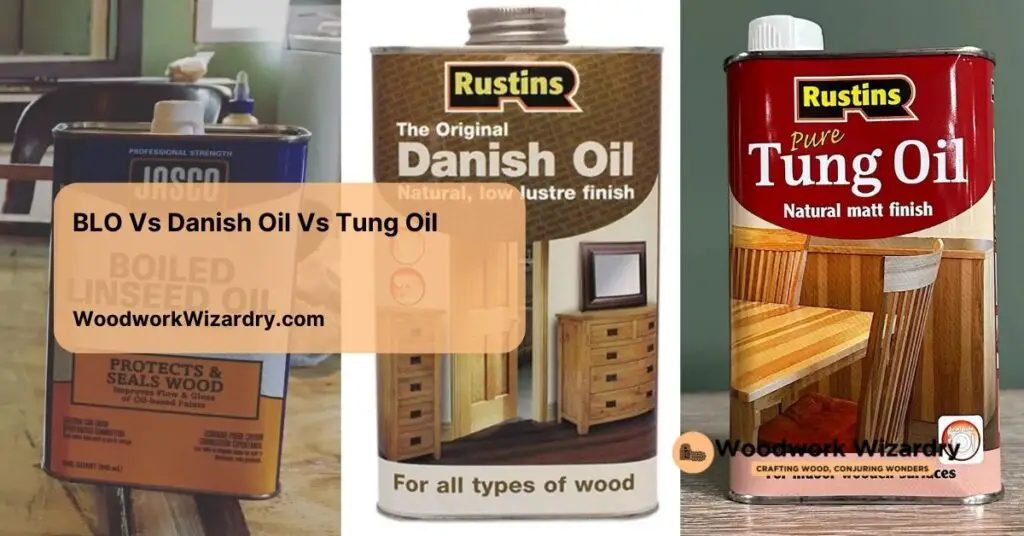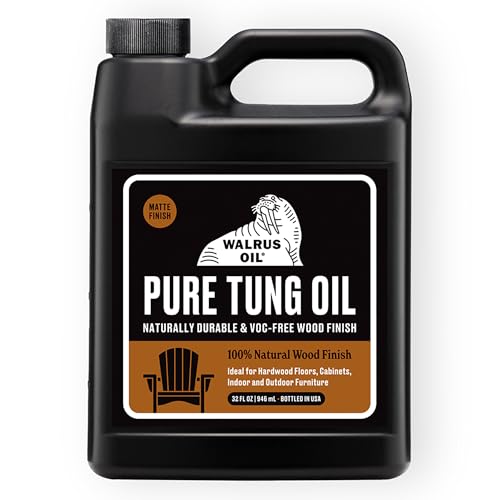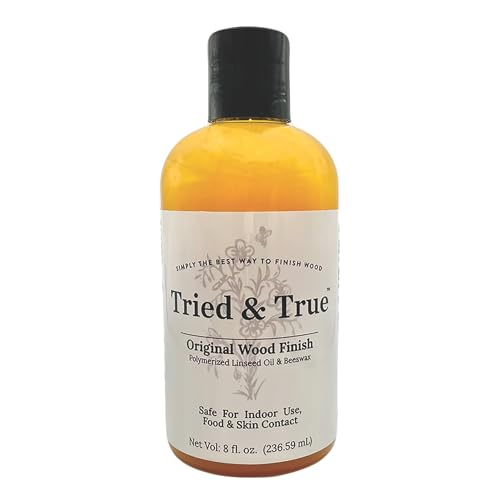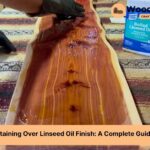Choosing the right wood finish can make or break your project. Whether you’re restoring furniture, crafting a masterpiece, or protecting your outdoor woodwork, the finish you pick defines the look, feel, and durability of your work. But with options like BLO (Boiled Linseed Oil), Danish Oil, and Tung Oil, it’s easy to feel overwhelmed. Each has its own unique charm, benefits, and drawbacks.
You want a finish that doesn’t just look stunning but also stands the test of time. BLO brings deep warmth, Danish Oil offers versatility, and Tung Oil boasts unmatched durability. But which one suits your needs? By understanding their differences, you’ll unlock the secret to achieving professional-quality results. Ready to transform your woodwork and make the perfect choice? Let’s jump into the details and help you pick the ultimate finish for your next project.
What Are BLO, Danish Oil, And Tung Oil?
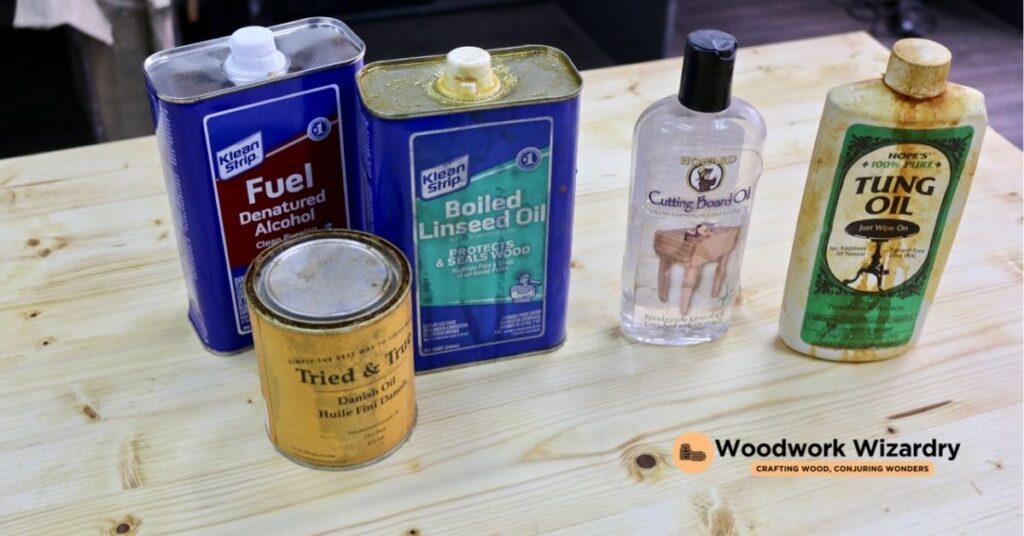
Boiled Linseed Oil (BLO), Danish Oil, and Tung Oil are popular finishes for protecting and improving wood surfaces. Each offers distinct benefits, making them suitable for exact woodworking projects.
Key Characteristics Of BLO
Boiled Linseed Oil dries faster than raw linseed oil due to added drying agents. It penetrates deep into the wood, creating a durable finish that enhances the natural grain. BLO provides a slightly glossy look, making it ideal for indoor furniture or antique wood pieces. Regular maintenance may be necessary since it doesn’t offer strong water resistance.
Key Characteristics Of Danish Oil
Danish Oil combines oil and varnish, resulting in a more water-resistant and durable finish. It cures harder than BLO, offering better surface protection while maintaining a low-sheen appearance. This finish works well for functional furniture like tables and chairs, requiring a balance of durability and visual appeal. Danish Oil also allows for easy reapplication to refresh surfaces.
Key Characteristics Of Tung Oil
Tung Oil, derived from the seeds of the tung tree, offers excellent water resistance once fully cured. It provides a rich, matte finish while highlighting the wood’s natural beauty. Pure Tung Oil requires multiple coats and important curing time, making it ideal for high-quality projects requiring a non-toxic finish. You can use it on items like cutting boards or wood countertops.
Comparing BLO, Danish Oil, And Tung Oil
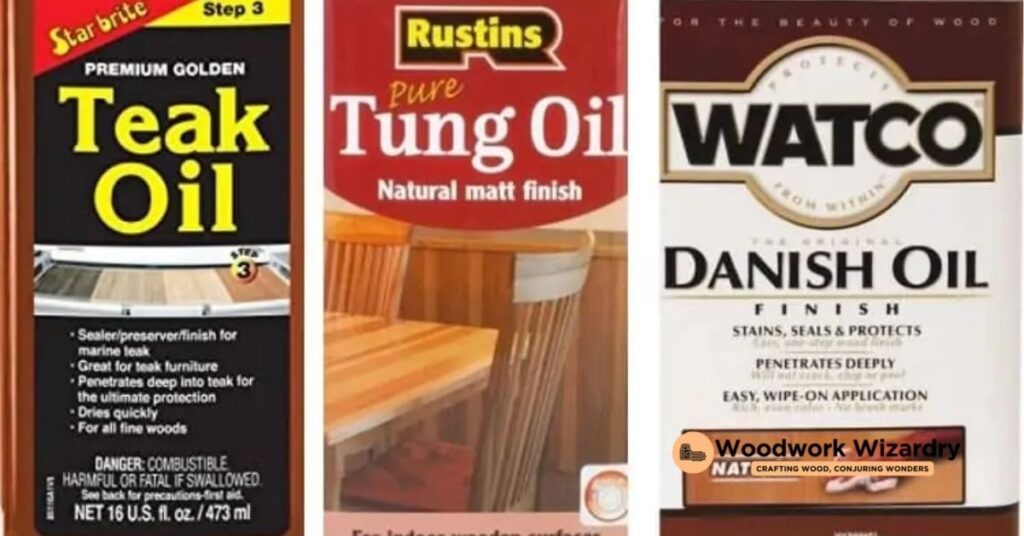
Each oil offers distinct qualities suited to exact woodworking needs. Understanding their differences helps you choose the best solution for your project.
Durability And Protection
BLO provides moderate durability, penetrating deeply into the wood but offering limited water resistance. It suits low-impact indoor furniture requiring occasional touch-ups. Danish Oil ensures better protection by combining oil and varnish, creating a harder, water-resistant layer. It works well for functional furniture subjected to regular use. Tung Oil offers the highest durability, forming a robust, waterproof barrier ideal for cutting boards and outdoor items.
Ease Of Application
Boiled Linseed Oil applies easily with minimal prep work, as it’s forgiving in uneven layers. Using Danish Oil requires slightly more care since it’s thicker, but it spreads evenly and allows layering without streaks. Tung Oil needs patience due to its viscosity and multiple thin coats, demanding careful application for optimal results.
Finish And Aesthetic Appeal
BLO leaves a slightly glossy finish that enhances the natural wood grain. Danish Oil offers a low-sheen look, maintaining subtle elegance on functional pieces. Tung Oil, in contrast, achieves a rich matte finish that elevates the appearance of high-end projects.
Drying Time And Maintenance
BLO dries faster, with each coat ready in 24 hours, though frequent reapplication ensures optimal performance. Danish Oil cures within 2-3 days per coat, requiring less maintenance over time. Tung Oil involves the longest drying time, with up to a week per coat, but its lasting durability compensates for the effort.
Advantages And Disadvantages Of Each
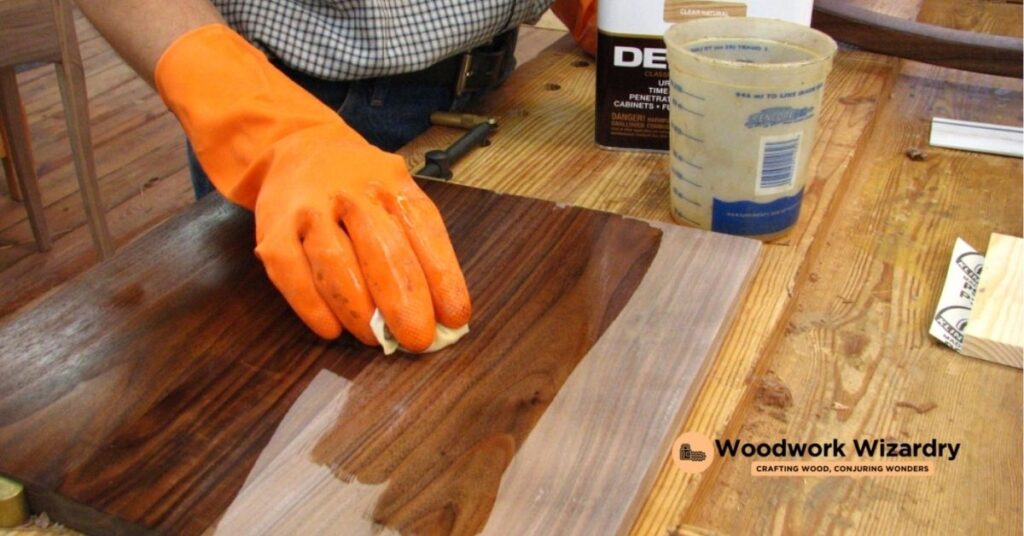
Each oil offers unique qualities that cater to different woodworking needs. Evaluating their advantages and disadvantages helps you choose the most suitable option for your project.
BLO: Pros And Cons
Boiled Linseed Oil penetrates deeply into the wood, improving the grain with a slightly glossy finish. It dries faster than raw linseed oil, allowing you to complete projects more efficiently. Minimal prep work and easy application make it beginner-friendly.
Limited water resistance means it’s not ideal for outdoor use or high-moisture environments. Regular maintenance is needed to preserve its finish, especially on frequently used items.
Danish Oil: Pros And Cons
Danish Oil combines oil and varnish to create an appealing low-sheen finish. It offers better water resistance and durability than BLO, making it practical for functional furniture like tables and chairs. The faster curing time, typically 2-3 days, minimizes delays during projects.
Its synthetic components may lack the natural appeal of Tung Oil. While it spreads evenly, proper care is important during application to achieve consistent results.
Tung Oil: Pros And Cons
Tung Oil provides unmatched water resistance, forming a tough waterproof layer. This property makes it highly durable, perfect for cutting boards or outdoor furniture. It delivers a rich matte finish that enhances wood without a glossy appearance.
The need for multiple thin coats and extended curing time complicates its application process. Its viscosity demands patience and careful handling to avoid uneven layers.
Best Applications For BLO, Danish Oil, And Tung Oil
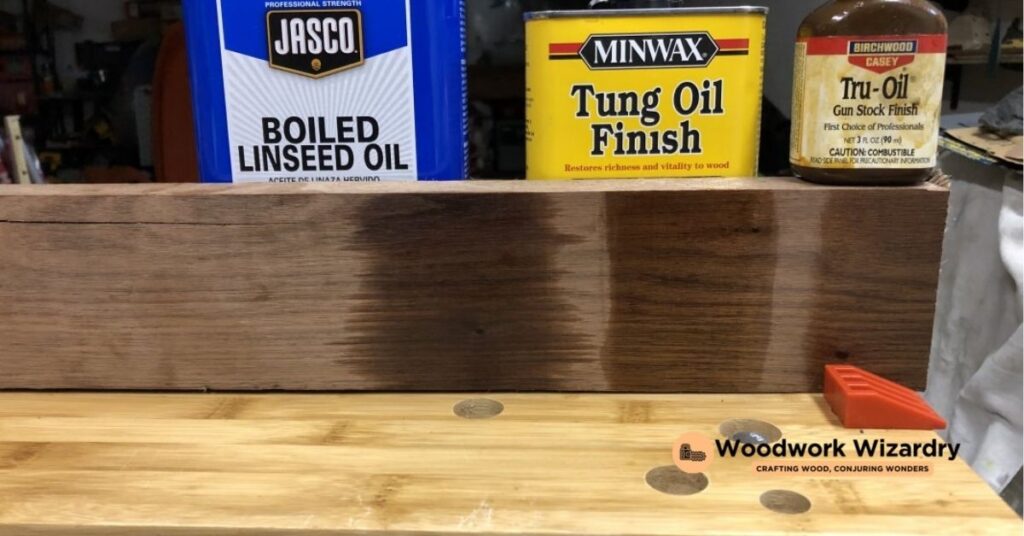
Each wood finish serves different purposes, improving exact types of projects based on their unique properties and look. Understanding where each excels will help you achieve professional-quality results.
Ideal Uses For BLO
Boiled Linseed Oil works best for indoor woodwork projects. Furniture restoration, such as tables and chairs, benefits from its ability to penetrate deeply and highlight the wood grain. It’s a practical option for decorative pieces needing a glossy finish or minimal wear resistance. For budget-friendly finishes, BLO performs well but requires regular maintenance due to limited water resistance.
Ideal Uses For Danish Oil
Danish Oil proves versatile for functional furniture. Applications like kitchen tables or desks benefit from its water resistance and durability. It enhances hardwoods like oak and cherry by maintaining their natural look with a soft, low-sheen finish. Outdoor projects, if protected under cover, can also benefit from its moderate durability. When you need a balanced blend of aesthetics and performance, Danish Oil is a reliable choice.
Ideal Uses For Tung Oil
Tung Oil is perfect for high-quality items where durability matters most. Projects like cutting boards, butcher blocks, or outdoor furniture thrive with its waterproof properties. It offers a rich matte finish that suits heirloom-quality restorations or fine woodworking. Use Tung Oil for items needing maximum longevity and environmental resistance, even though patience for curing time is essential.
How To Choose The Right Oil For Your Project
Select the oil based on the type of wood and its intended use. BLO works best for low-impact indoor furniture, especially where easy application and a glossy finish are preferred. Danish Oil suits furniture that requires moderate water resistance, like kitchen tables or desks, thanks to its durable, low-sheen layer. Opt for Tung Oil when maximum durability and water resistance are critical, making it ideal for cutting boards or outdoor furniture.
Consider the required maintenance and durability levels. BLO provides moderate protection but needs frequent reapplication, making it less suitable for high-usage areas. Danish Oil offers a balance of durability and maintenance, curing in 2-3 days while requiring less upkeep. Tung Oil takes the longest to cure but delivers lasting durability, reducing the need for regular maintenance.
Evaluate the aesthetic appeal you want to achieve. BLO enhances wood grain with a glossy finish, adding depth to indoor projects. Danish Oil maintains a more understated low-sheen look that blends well with functional furniture designs. Tung Oil creates a rich matte finish that highlights the natural beauty of the wood, perfect for high-quality projects.
Assess the time and effort you’re willing to invest in application. BLO requires minimal preparation and dries quickly, making it user-friendly for beginners. Danish Oil spreads evenly but needs careful application for the best results. Tung Oil demands more patience, requiring multiple thin layers and extended curing times for a durable finish.
Conclusion
Choosing between Boiled Linseed Oil, Danish Oil, and Tung Oil eventually depends on your project’s requirements and your personal preferences. Each finish offers unique benefits, from ease of application to durability and aesthetic appeal. By considering factors like water resistance, maintenance needs, and drying time, you can select the best option to enhance and protect your woodwork.
Whether you’re working on indoor furniture, functional pieces, or high-quality items, understanding these finishes ensures your project achieves both beauty and longevity. With the right choice, your woodworking creations will stand the test of time while showcasing their natural charm.

